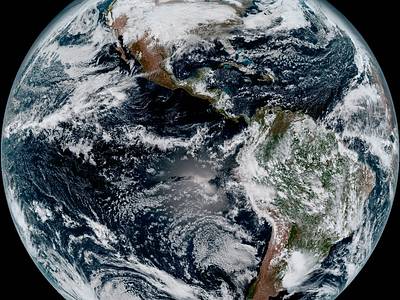It’s now, it’s us, it’s not over – the top 7 takeaways from the new climate change report

The U.S. government recently released the Climate Science Special Report (CSSR) – the work of fifty climate science experts who compiled and analyzed the latest knowledge about the physical science of climate change from more than 1,500 scientific journal articles and reports.
The CSSR is often referred to as the first volume of the Fourth National Climate Assessment. National Climate Assessments have been Congressionally mandated since 1990 to be prepared every four years. The second and final volume of the Fourth National Climate Assessment will focus on societal impacts and will be released in 2018.
The CSSR is packed with valuable and scientifically robust information – but it’s almost 600 pages long. If you don’t have time to read it all, don’t worry. We quote some of the most important, and most alarming, facts below.
Here are some of the major takeaways of the CSSR:
It’s now
- Global average temperature since 1900 is the warmest in the history of modern civilization. Global annually averaged surface air temperature has increased by about 1.8 degrees Fahrenheit (1.0 degrees Celsius) over the last 115 years (1901 to 2016).
- Sea level rise is accelerating and has already impacted dozens of U.S. cities. Globally averaged sea level has risen by about 7 to 8 inches since 1900, with almost half (about 3 inches) of that rise occurring since 1993. The incidence of daily tidal flooding is accelerating in more than 25 Atlantic and Gulf Coast cities.
- Several extreme weather and climate events are increasing in intensity and frequency across the U.S. and the world. Heavy rainfall is increasing in intensity and frequency, heatwaves have become more frequent in the United States since the 1960s, and the incidence of large forest fires in the western United States and Alaska has increased since the early 1980s. However, extreme cold temperatures and cold waves are less frequent.
- Earlier spring melt and reduced snowpack are affecting water resources in the western U.S.
It’s us
- There is no convincing alternative explanation supported by observational evidence that warming over the last century is caused by anything other than human activities. It is extremely likely that human activities, especially emissions of greenhouse gases, are the dominant cause of the observed warming since the mid-20th century.
It’s not over
- Without major reductions in emissions, annual average global temperature relative to preindustrial times could increase by 9 degrees Fahrenheit (5 degrees Celsius) or more by the end of this century. With significant reductions in emissions, the increase in annual average global temperature could be limited to 3.6 degrees Fahrenheit (2 degrees Celsius) or less.
- With further warming comes further sea level rise. Global average sea levels are expected to continue to rise — by at least several inches in the next 15 years and by one to four feet by 2100. A rise of as much as eight feet by 2100 cannot be ruled out. Sea level rise will be higher than the global average on the East and Gulf Coasts of the United States.
The CSSR should put any doubts about whether climate change is a serious threat to rest. The report makes it crystal clear that it is – and that we need to act before it gets worse.











